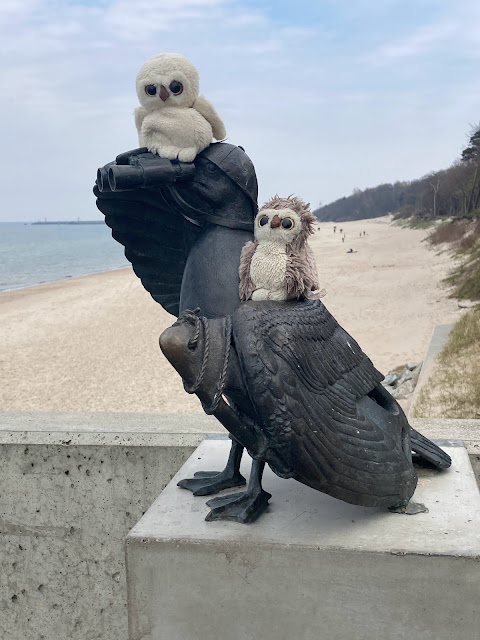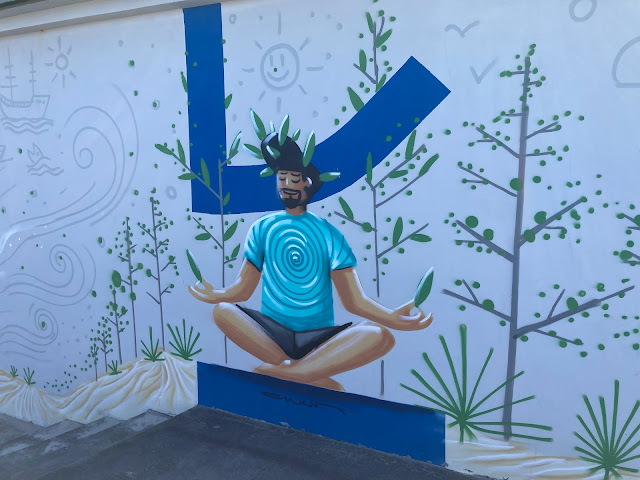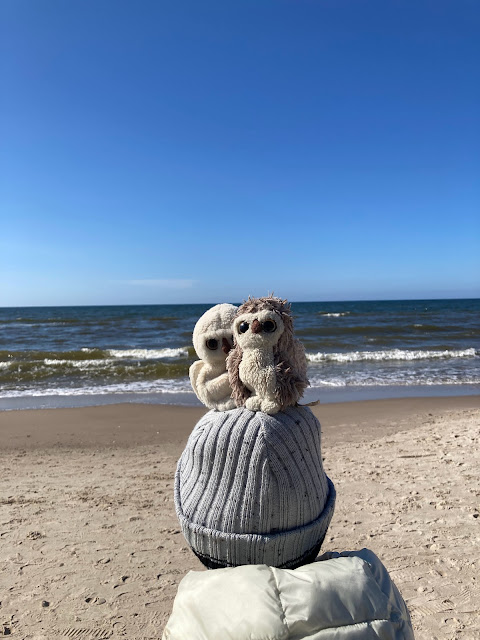"Czasami czuję się, jakbym była takim budynkiem.
Ściany stoją, chociaż są zniszczone i brudne,
ale w środku już nic nie ma. Pusto i ciemno."
"Sometimes I feel like I am such a building.
The walls are standing, even though they are dilapidated and dirty,
But there is nothing inside anymore. It's empty and dark."
W dzisiejszym odcinku z serii zabieram Was do 19-tej dzielnicy Wiednia, gdzie w latach 1927-1930 powstawał jeden z najdłuższych bloków mieszkalnych na świecie. Został zaprojektowany przez Karla Ehna a jego długość wynosi 1100 metrów. Do jego budowy zużyto ponad 24 miliony cegieł. W budynku znajdowały się łącznie 1382 mieszkania, które zamieszkiwane były przez ponad 5000 mieszkańców. Dzięki elewacji w kolorze czerwonym, sprawiał on w momencie oddania go do użytku publicznego, wrażenie sporej architektonicznej fortecy. Kolorystyka dalszej części elewacji ma odcień bladej żółci albo jest jasnoniebieska. Kompleks ten cechuje się bardzo niską gęstością zabudowy. Wewnętrzny dziedziniec wraz z parkiem, ma ponad 10 000 metrów kwadratowych i stanowi wspólną przestrzeń rekreacyjną.
Na terenie budynku w momencie powstania działało dość bogate zaplecze komunalne - na jego terenie znajdowały się biblioteki, ośrodek zdrowia, pralnie, biura, przedszkole, szkoły, restauracje, a nawet łaźnie oraz pralnie. Te ostatnie nie są obecnie użytkowane, a w ich miejscu zbudowano muzeum opowiadające historię tzw. czerwonego Wiednia.Wzdłuż budynku znajdują się aż cztery przystanki tramwajowe. Światło dzienne oraz elektryczność były standardem od samego początku powstania tej modernistycznej, mieszkalnej twierdzy. Mieszkania te posiadały także balkony, które w latach 30-tych były typowe raczej dla mieszkań klasy średniej i bogatej, aniżeli robotniczej, dla której kompleks ten przede wszystkim powstał.
Zatem, jeśli jesteście fanami architektury i kiedykolwiek będziecie mieli okazję pojechać do Wiednia to zdecydowanie warto ten budynek zobaczyć na własne oczy, zwłaszcza, że jest on traktowany także jako obiekt historyczny, który odegrał swoją rolę podczas II Wojny Światowej.
***
In today's episode in the series, I take you to Vienna's 19th district, where until 1927 to 1930 was built one of the longest residential blocks in the world. It was designed by Karl Ehn and its length is 1,100 meters. More than 24 million bricks were used in its construction. The building contained a total of 1,382 apartments, which were inhabited by more than 5,000 residents. Thanks to its red-colored facade, it gave the impression of a sizable architectural fortress when it was put into public use. The color scheme of the rest of the facade is a shade of pale yellow or light blue. The complex is characterized by very low-density housing. The inner courtyard, including the park, is more than 10,000 square meters and is a common recreational space.
At the time of its construction, the building was home to quite extensive community facilities - there were libraries, a health center, laundries, offices, a kindergarten, schools, restaurants and even bathhouses and laundries. The last two of them are now out of use, and in their place has been build a museum telling the story of so-called Red Vienna. Along the building there are as many as four streetcar stops. Daylight and electricity were standard from the very beginning of the construction of this modernist residential fortress. The apartments also had balconies, which in the 1930s were typical of middle-class and wealthy apartments rather than the working class for whom the complex was primarily built.
So, if you are a fan of architecture and ever have the opportunity to go to Vienna it is definitely worth seeing this building with your own eyes, especially since it is also treated as a historical building that played its role during World War II.














































































